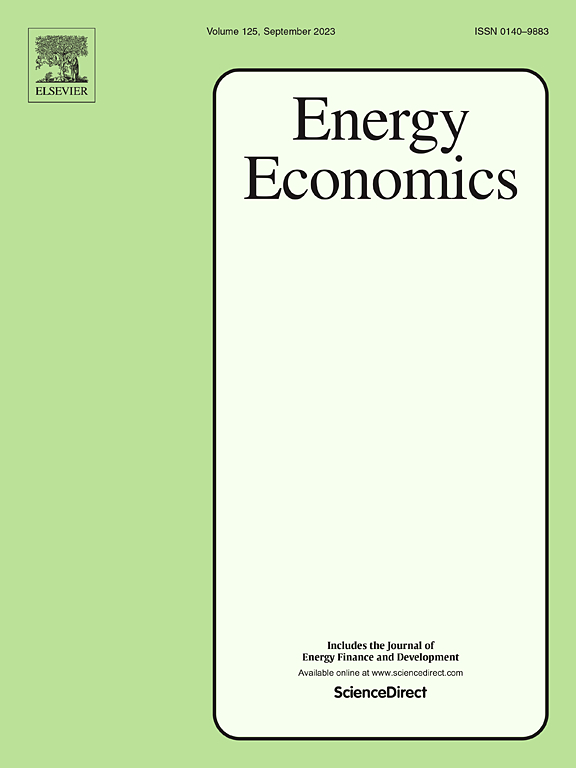Environmental policy and distance to firms: An analysis of publicly listed firms in China
IF 13.6
2区 经济学
Q1 ECONOMICS
引用次数: 0
Abstract
Focusing on the seven regions with pilot emission trading scheme (ETS) in China, we develop a novel theory explaining firms’ environmental investment (EI) decision, which is endogenous to the spatial effects associated with waste-recycling facility (WRF) proximity and ETS induced peer-to-peer learning. A novel feature is that, due to the use of resource inputs, firms incur both recyclable and carbon-intensive waste disposal costs. This leads to two empirically testable propositions and a conjecture, which we evaluate based on cross-sectional analyses of 1717 public listed firms in China during the 2015–20 periods. We find WRF proximity to correlate positively with observed EI take-up, and this is subsequently associated with higher labor productivity. However, ETS-infused peer learning effect has the opposite effect in that proximity to an investing neighbor results seems to be associated with freeriding, especially when the difference in internal margins between firms is accounted for. While there are overall positive spatial spillover effects, this results in policy rivalry (between the two policies), where the freeriding effect not only results in a lack of ETS policy effect onto labor productivity of even the 219 EI firms, but also mitigates the positive WRF proximity effect.
求助全文
约1分钟内获得全文
求助全文
来源期刊

Energy Economics
ECONOMICS-
CiteScore
18.60
自引率
12.50%
发文量
524
期刊介绍:
Energy Economics is a field journal that focuses on energy economics and energy finance. It covers various themes including the exploitation, conversion, and use of energy, markets for energy commodities and derivatives, regulation and taxation, forecasting, environment and climate, international trade, development, and monetary policy. The journal welcomes contributions that utilize diverse methods such as experiments, surveys, econometrics, decomposition, simulation models, equilibrium models, optimization models, and analytical models. It publishes a combination of papers employing different methods to explore a wide range of topics. The journal's replication policy encourages the submission of replication studies, wherein researchers reproduce and extend the key results of original studies while explaining any differences. Energy Economics is indexed and abstracted in several databases including Environmental Abstracts, Fuel and Energy Abstracts, Social Sciences Citation Index, GEOBASE, Social & Behavioral Sciences, Journal of Economic Literature, INSPEC, and more.
 求助内容:
求助内容: 应助结果提醒方式:
应助结果提醒方式:


